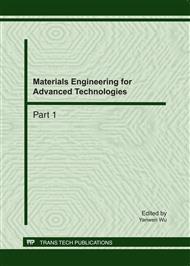p.266
p.272
p.278
p.283
p.288
p.294
p.300
p.306
p.311
CFD Simulation for the Resistance Performance of 1000 Dwt Deep-Vee Vessels on Bulbous Bow
Abstract:
Resistance influence factors of bulbous bow are analyzed with three 1000dwt displacement types Deep-vee forms provided. The free surface viscous flow of these forms is calculated by air-water two phases RANS equations with RNG turbulence model and volume of fraction method. Total resistance, pressure distribution and wave profile of hull are presented. Some results can be taken as follows: Adopted longer protruding length can improve the resistance character at medium high speed and ameliorate the resistance performance in calm water at low speed to design a 1000dwt deep-vee vessel; the bulbous bow wavemaking is only one of the reasons to influence the wavemaking resistance of hull. The importance influence factor of hull wavemaking resistance is how to form advantage disturbance or least disadvantage disturbance between the bulbous bow wave and hull wave.
Info:
Periodical:
Pages:
288-293
Citation:
Online since:
June 2011
Authors:
Price:
Сopyright:
© 2011 Trans Tech Publications Ltd. All Rights Reserved
Share:
Citation:


